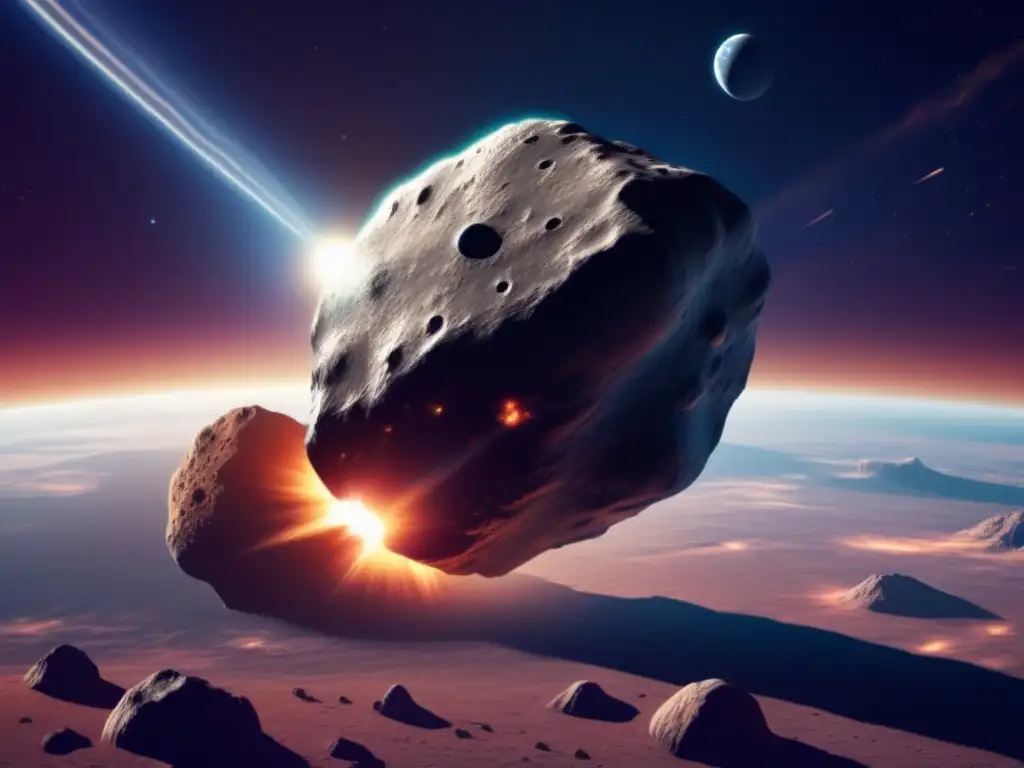Dodge That Rock: Technologies For Preventing Asteroid Impacts

Introduction
Asteroids are among the most fascinating, yet destructive objects in the universe. In recent years, there has been increasing concern over the possibility of a catastrophic impact with Earth. While Hollywood movies have often depicted asteroid impacts as inevitable and unstoppable, science has shown us that it is possible to prevent such a disaster from occurring.
Understanding the Threat

The Dangers of Asteroid Impacts
Asteroids come in different sizes, shapes, and compositions. Some of them are harmless, while others can cause massive destruction and loss of life. The impact of a large asteroid could trigger earthquakes, tsunamis, wildfires, and even nuclear winter, depending on the location and intensity of the impact.
The Likelihood of an Impact
The chances of an asteroid impacting Earth are relatively low, but not negligible. According to NASA, there are currently over 25,000 near-Earth asteroids with a size of at least 140 meters, which is large enough to cause regional damage. However, only a fraction of these asteroids have been discovered and tracked so far.
Spotting Asteroids
The key to preventing an asteroid impact is early detection. This involves using ground-based telescopes, space telescopes, and radar to search for asteroids that are potentially hazardous to Earth. The most effective way to detect asteroids is by observing their movement against the background stars, which allows astronomers to calculate their trajectory and predict their future path.
Deflecting Asteroids

The Kinetic Impactor Method
One of the most promising technologies for deflecting asteroids is the kinetic impactor method. This involves using a spacecraft to collide with an asteroid at high speed, which would change its trajectory and prevent it from hitting Earth. The spacecraft could be launched several years before the predicted impact, giving it enough time to reach the asteroid.
The Gravity Tractor Method
The gravity tractor method is another potential option for deflecting asteroids. This involves using a spacecraft to fly close to an asteroid and use its gravitational pull to gradually change its trajectory over a long period of time. While this method is less destructive than the kinetic impactor method, it requires more time and precision.
The Nuclear Option
While not the first choice for asteroid deflection, the nuclear option has been proposed as a last resort. This involves detonating a nuclear explosion near or on the surface of an asteroid, which would create a shockwave that could change its trajectory. However, this method is highly controversial due to the potential risks and uncertainties involved.
Preparing for the Worst

International Cooperation
Preventing an asteroid impact requires international cooperation and coordination. The United Nations has established the International Asteroid Warning Network (IAWN) and the Space Mission Planning Advisory Group (SMPAG) to promote collaboration between countries and organizations in terms of asteroid detection, mitigation, and disaster response.
Emergency Response Planning
In the event of an asteroid impact, emergency response planning is critical to minimizing the damage and saving lives. Governments and organizations need to work together to develop evacuation plans, communication strategies, and disaster relief measures. This includes preparing for the aftermath of the impact, such as the spread of debris and possible secondary impacts.
Frequently Asked Questions

-
How likely is an asteroid impact?
The chances of an asteroid impacting Earth are relatively low, but not negligible. NASA estimates that there are over 25,000 near-Earth asteroids with a size of at least 140 meters.
-
What is the kinetic impactor method?
The kinetic impactor method involves using a spacecraft to collide with an asteroid at high speed, which would change its trajectory and prevent it from hitting Earth.
-
Why is international cooperation important for asteroid detection?
International cooperation is important for asteroid detection because asteroids can travel across national borders and affect multiple countries. Collaboration between countries and organizations can also help share resources and expertise.
-
What is the role of emergency response planning in preventing asteroid impacts?
Emergency response planning is critical in minimizing the damage and saving lives in the event of an asteroid impact. Governments and organizations need to work together to develop evacuation plans, communication strategies, and disaster relief measures.
-
Can we prevent all asteroid impacts?
No, we cannot prevent all asteroid impacts. However, early detection and deflection methods can reduce the likelihood of a catastrophic impact with Earth.
Conclusion
Preventing asteroid impacts requires a combination of early detection, effective deflection methods, and emergency response planning. While the likelihood of an impact may be relatively low, the consequences could be devastating. It is important for governments, organizations, and individuals to take this threat seriously and work together to mitigate the risks.
If you have any further questions or comments on this topic, please feel free to share them in the comments section below. Remember to subscribe and share www.asteroidrealm.com for more information on asteroids and space science.
Additional Resources

For further reading on asteroid detection and deflection methods, check out these resources:
 Securing The Skies: The Latest In Planetary Defense
Securing The Skies: The Latest In Planetary Defense Asteroid Apocalypse: The Current State Of Planetary Defense
Asteroid Apocalypse: The Current State Of Planetary Defense Standing Guard: How We Protect Earth From Asteroids
Standing Guard: How We Protect Earth From AsteroidsIf you want to discover more articles similar to Dodge That Rock: Technologies For Preventing Asteroid Impacts, you can visit the Planetary Defense category.
Leave a Reply

Articulos relacionados: